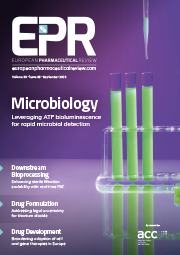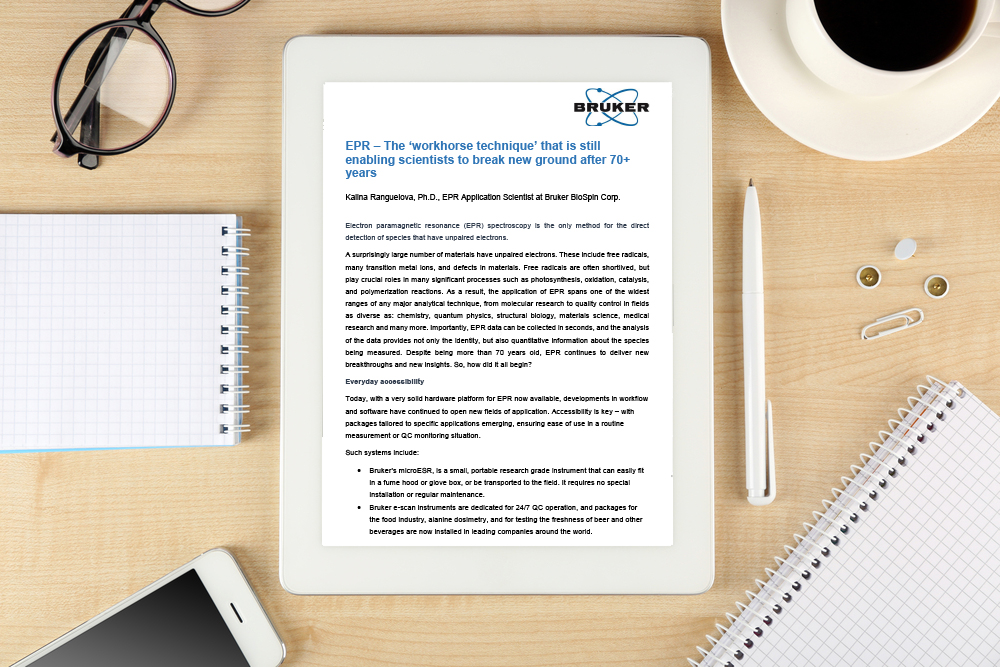Whitepaper: The ‘workhorse technique’ that is still enabling scientists to break new ground after 70+ years
Posted: 13 December 2017 | Bruker Biospin | No comments yet
Electron paramagnetic resonance (EPR) spectroscopy is the only method for the direct detection of species that have unpaired electrons…
A surprisingly large number of materials have unpaired electrons. These include free radicals, many transition metal ions, and defects in materials. Free radicals are often shortlived, but play crucial roles in many significant processes such as photosynthesis, oxidation, catalysis, and polymerization reactions.
As a result, the application of EPR spans one of the widest ranges of any major analytical technique, from molecular research to quality control in fields as diverse as: chemistry, quantum physics, structural biology, materials science, medical research and many more.
Importantly, EPR data can be collected in seconds, and the analysis of the data provides not only the identity, but also quantitative information about the species being measured. Despite being more than 70 years old, EPR continues to deliver new breakthroughs and new insights. So, how did it all begin?
This whitepaper is restricted - login or subscribe free to access


Why subscribe? Join our growing community of thousands of industry professionals and gain access to:
- bi-monthly issues in print and/or digital format
- case studies, whitepapers, webinars and industry-leading content
- breaking news and features
- our extensive online archive of thousands of articles and years of past issues
- ...And it's all free!
Click here to Subscribe today Login here
Related content from this organisation
Related topics
Analytical techniques, QA/QC, Research & Development (R&D), Technology






![Close up view of the Merck logo on the top corner of a glass building [Credit: Michael Vi / Shutterstock.com].](https://www.europeanpharmaceuticalreview.com/wp-content/uploads/Merck-aquisition-400x187.jpg)



